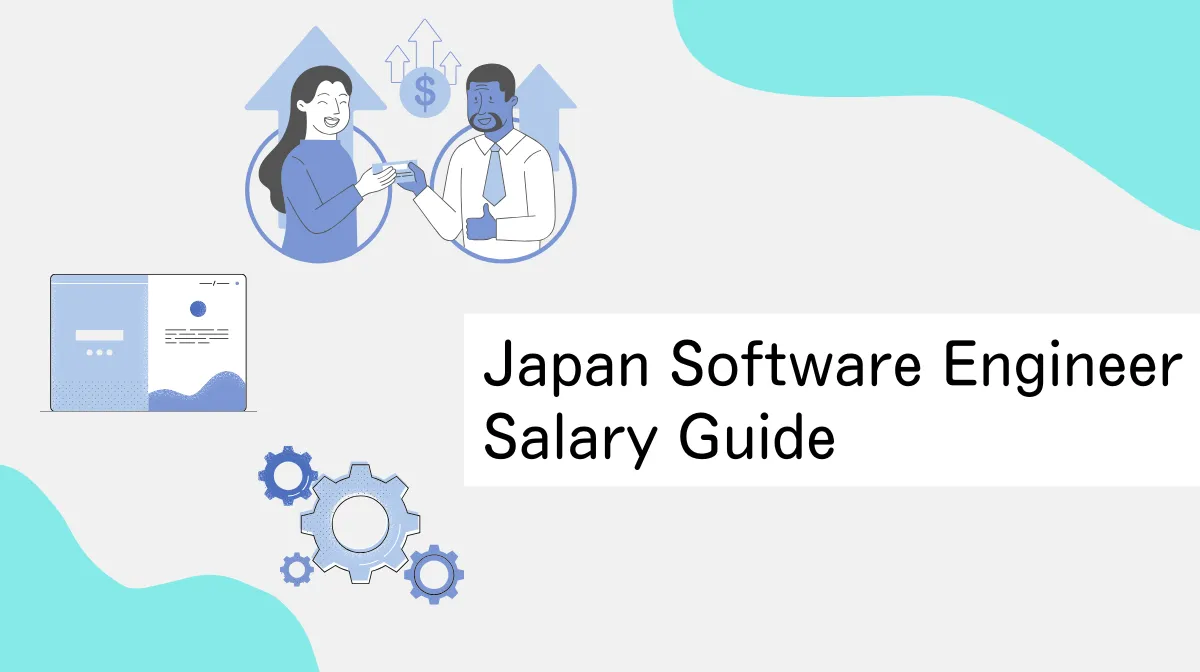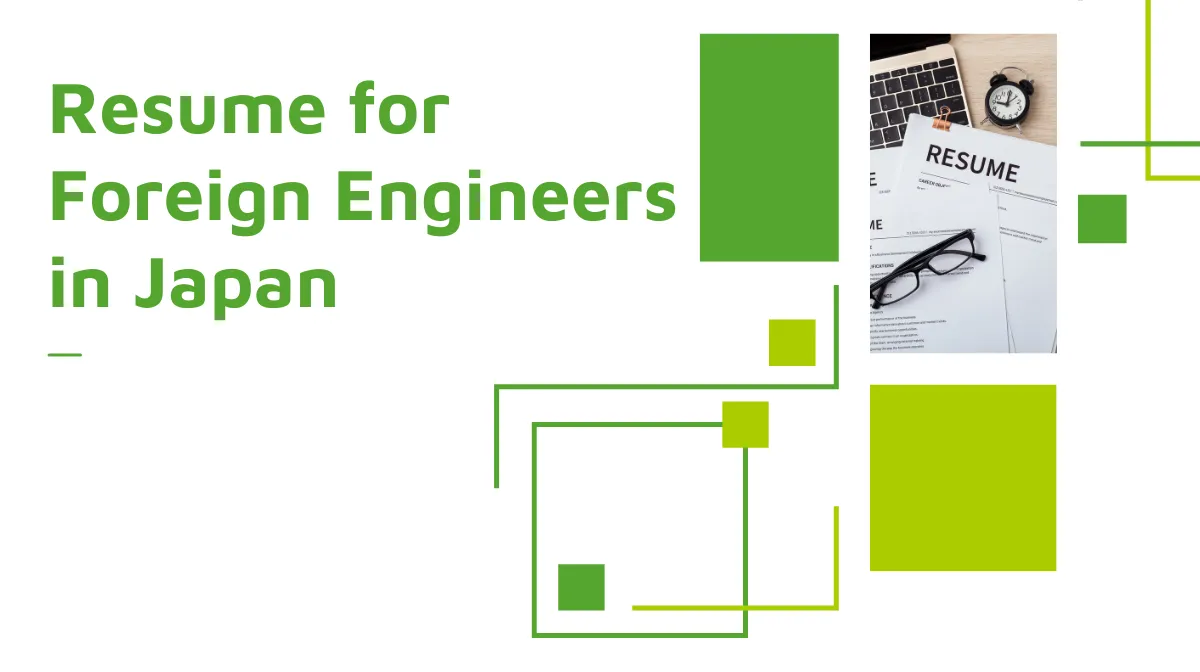Choosing a programming language is an important decision for aspiring backend engineers or those considering a career change. The optimal choice varies depending on nationality and background.
This article introduces recommended languages for specific purposes and selection criteria for engineers working in Japan or foreign engineers seeking employment in Japan.
1. What is a Backend Engineer?
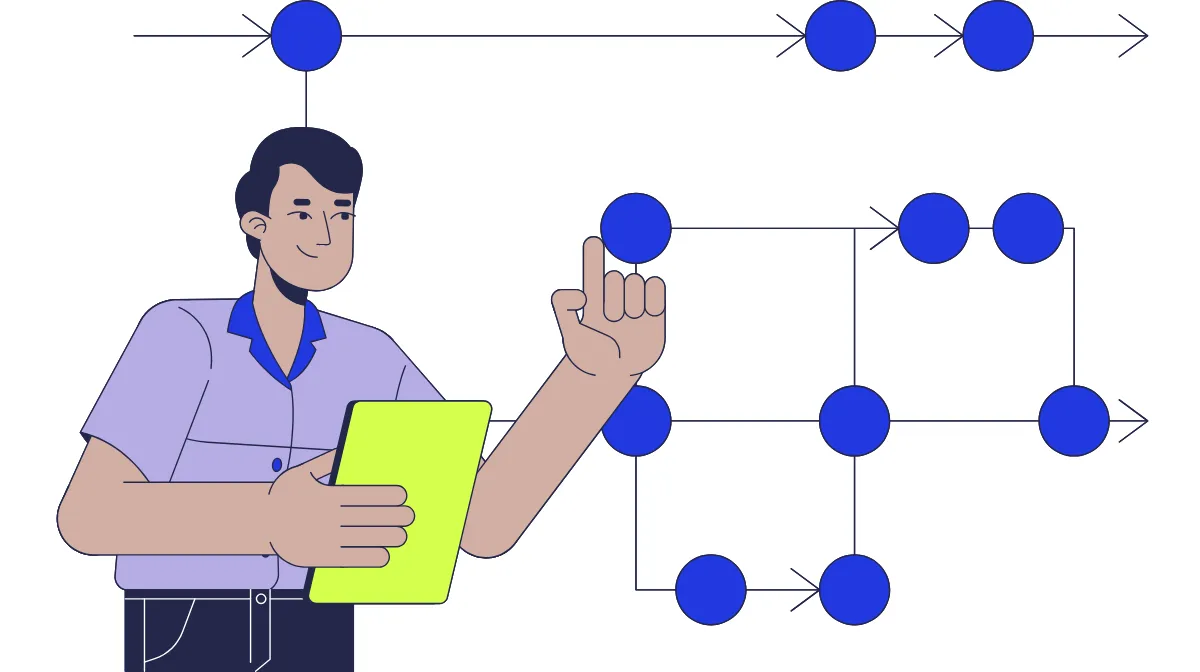
A backend engineer develops the behind-the-scenes systems of websites and web applications that users don’t directly see.
They are responsible for database design and management, API development, server construction, and play a crucial role in supporting the entire service.
Although the backend is invisible to users, it forms the technical foundation that supports the core aspects of a service such as stability, security, and performance, making it extremely valuable.
The Role and Importance of Backend Engineers
Backend engineers build systems that process user requests, retrieve and process necessary data, and provide it to the frontend.
For example, they are responsible for product searches and order processing on e-commerce sites, or post and comment functionalities on social networks—handling data processing and storage in response to user actions.
Because backend systems form the foundation of a service, their quality directly affects performance, security, and scalability.
Without proper backend design, problems may arise as a service grows, or security risks may increase.
Therefore, the technical choices and design decisions made by backend engineers are crucial factors that influence the overall success of a service.
The Difference Between Frontend and Backend
The most clear distinction between frontend and backend is whether it’s “the part visible to users” or “the part that operates behind the scenes”
Frontend
Responsible for the appearance of websites and apps and the interactive elements for users. Languages like HTML, CSS, and JavaScript are used.
Backend
Handles data processing, storage, and business logic implementation. Languages such as Java, Python, Ruby, PHP, and Go are used.
Additionally, while frontend emphasizes understanding user experience (UX) and design elements, backend requires knowledge of database design, system architecture, performance optimization, and security.
Though they work closely together, they are fields that require different technology stacks and specialized knowledge.
Basic Skills Required for Backend Engineers
Backend engineers need a wide range of skills.
- Proficiency in at least one backend language such as Java, Python, Ruby, or PHP is an essential requirement
- Deep understanding of database technologies like SQL and NoSQL, with skills in efficient data modeling and query optimization
- Knowledge of web servers (Apache, Nginx), operating systems (Linux, Windows Server), and cloud services (AWS, GCP, Azure)
- The ability to design and implement appropriate APIs such as RESTful APIs or GraphQL
- Understanding of security measures to prevent attacks such as SQL injection, XSS, and CSRF
In addition to these skills, the ability to design scalable and maintainable systems, and knowledge of version control systems like Git are also important.
Acquiring these basic skills will build the foundation needed to succeed as a backend engineer.
2. Characteristics of the Japanese Backend Development Market

The Japanese backend development market has unique characteristics that differ from the global market.
Understanding language selection, corporate culture, and development approaches can open up opportunities for success in Japanese companies.
For foreign engineers in particular, understanding these market characteristics is extremely important.
Mainstream Backend Technology Stacks in Japanese Companies
Backend technology stacks in Japanese companies vary greatly depending on the size of the company, industry, and when it was established.
- Large companies and financial institutions’ core systems
Languages that prioritize stability and reliability such as Java and C# remain mainstream. Java in particular is widely adopted in enterprise system development and tends to have a high number of job openings. In recent years, Python has rapidly gained popularity and is being adopted not only in AI and machine learning related projects but also in web development. - Web-based companies
PHP and Ruby maintain strong popularity. Ruby in particular, with its Ruby on Rails framework, has been embraced by Japanese companies as a domestically created language. Many Japanese web services such as Cookpad and Money Forward are developed with Ruby on Rails. - Startup companies
Go is gaining attention in services requiring high performance, and its adoption is increasing especially in startup companies.
Industry Trends in Language Adoption
The Japanese IT industry shows characteristic trends in languages and frameworks used by industry. It’s important to understand industry trends and choose a language suitable for your target field.
- Financial and insurance industry
Java, COBOL (legacy systems), and C# are mainstream due to emphasis on stability and security. - Large-scale core systems
Robust enterprise-oriented languages are preferred. - E-commerce and retail industry
PHP, Ruby, Python, and Node.js are widely adopted. In particular, PHP (WordPress and Magento) is often used with e-commerce platforms. - Server-side in the gaming industry
Java, C#, and Node.js are common, with increased demand for C# when related to Unity development. - SaaS and cloud services
Relatively new technologies are easily introduced, with Go, Python, Node.js, and Ruby being adopted. - Manufacturing and IoT
Java, C/C++, and Python are used, with C/C++ emphasized in cases requiring embedded system integration.
Points Where Foreign Engineers Are Valued in the Japanese Market
In Japanese companies, foreign engineers are evaluated not only on technical skills but also on communication abilities and cultural adaptability.
Japanese companies value team collaboration as well as individual abilities, so having a flexible attitude that can adapt to different development cultures and methodologies is appreciated.
There is also a tendency to value long-term employment relationships, so showing a willingness to contribute over the long term rather than as a short-term career step is important.
Specific points that increase evaluation
High technical skills are fundamental, but Japanese communication skills (JLPT N3 or above is a guideline) are often required. However, English-centric environments are increasing in foreign-affiliated companies and some globally-oriented Japanese companies.
Being familiar with the latest overseas technology trends and development methods can be a significant advantage for Japanese companies’ global expansion and technological innovation. Additionally, specialized knowledge in cutting-edge areas where Japan still lacks talent, such as AI, machine learning, and blockchain, tends to be highly valued.
■日本でエンジニアとしてキャリアアップしたい方へ
海外エンジニア転職支援サービス『 Bloomtech Career 』にご相談ください。「英語OK」「ビザサポートあり」「高年収企業」など、外国人エンジニア向けの求人を多数掲載。専任のキャリアアドバイザーが、あなたのスキル・希望に合った最適な日本企業をご紹介します。
▼簡単・無料!30秒で登録完了!まずはお気軽にご連絡ください!
Bloomtech Careerに無料相談してみる
3. Three Criteria for Choosing a Backend Language

When choosing a backend language, it’s important to consider deeper perspectives beyond just popularity or demand.
Especially when considering long-term career development, making the optimal choice from multiple perspectives is the shortcut to success.
Here we’ll explain in detail three important criteria to consider when choosing a language.
Choosing Based on Project Purpose and Scale
The optimal backend language varies greatly depending on the nature and scale of the project.
For small-scale websites and applications, languages with fast development speed and low learning costs are suitable.
PHP, Ruby on Rails, and Node.js are suited for short-term development and are ideal for small-scale projects and prototype development.
For large-scale systems and enterprise applications, stability, maintainability, and scalability become important.
Static typed languages such as Java and C# are suitable for maintenance and long-term operation of large-scale systems.
For high-traffic services, performance and parallel processing capabilities are required, so languages capable of high-speed processing such as Go, Java, and Rust are chosen.
For data processing and AI integration services, Python and Scala have strengths in data analysis and AI integration.
For mobile app backends, Node.js and Firebase (Google Cloud) are suitable for lightweight APIs.
It’s also important to consider a project’s future scalability.
Choosing Based on Career Goals and Compatibility
The choice of backend language is deeply related to your career path and strengths.
Choosing a language that matches your strengths, interests, and long-term career vision makes it easier to achieve sustainable growth and skill development.
If seeking a stable career
Languages with stable long-term demand such as Java and C# are suitable. Choosing languages with continued demand in stable industries such as large corporations and financial institutions makes it easier to build a long-term career.
If wanting to work with the latest technologies
Relatively new languages such as Golang, Rust, Node.js, or continuously evolving Python are suitable. Skills in the latest languages are more likely to be valued, especially in startups and technology-oriented companies.
If aiming for a specific industry
It’s advantageous to choose the mainstream language in that industry. For example, Python for AI/machine learning, C# (Unity) or C++ for game development.
It’s also important to choose a language that matches your learning style and strengths.
Additionally, choosing a language that is compatible with languages and knowledge you’ve already acquired increases learning efficiency.
Choosing Based on Market Trends and Future Potential
Considering the market value and future potential of languages is another important factor, as the IT industry is constantly changing.
Java, Python, JavaScript, and others consistently have a high number of job openings and tend to have relatively high salary levels. In the Japanese market in particular, there is still high demand for Java engineers, and experienced professionals can expect high annual incomes.
From the perspective of growth rate and future potential, Python and Go have seen rapidly increasing adoption in recent years and show promise for the future.
Especially Python continues to see growing demand with the development of AI and machine learning fields.
In terms of relevance to technology trends, compatibility with new architectures such as microservices, cloud-native, and serverless architectures is also important.
The activeness of the community is another important factor. Languages with active communities have frequent updates to information and libraries, making problem-solving easier.
Also, languages backed by major technology companies—such as Google supporting Go, Microsoft supporting C#, and Apple supporting Swift—can be expected to develop over the long term.
4. ten Backend Languages with Growing Demand

Here’s a detailed explanation of the features, strengths, and suitable uses of ten major languages expected to see increasing demand in backend development.
These languages have been selected based on current market trends and future potential, making them valuable reference information for engineers considering career development.
Python: Optimal for Beginners with Versatility and Ease of Learning
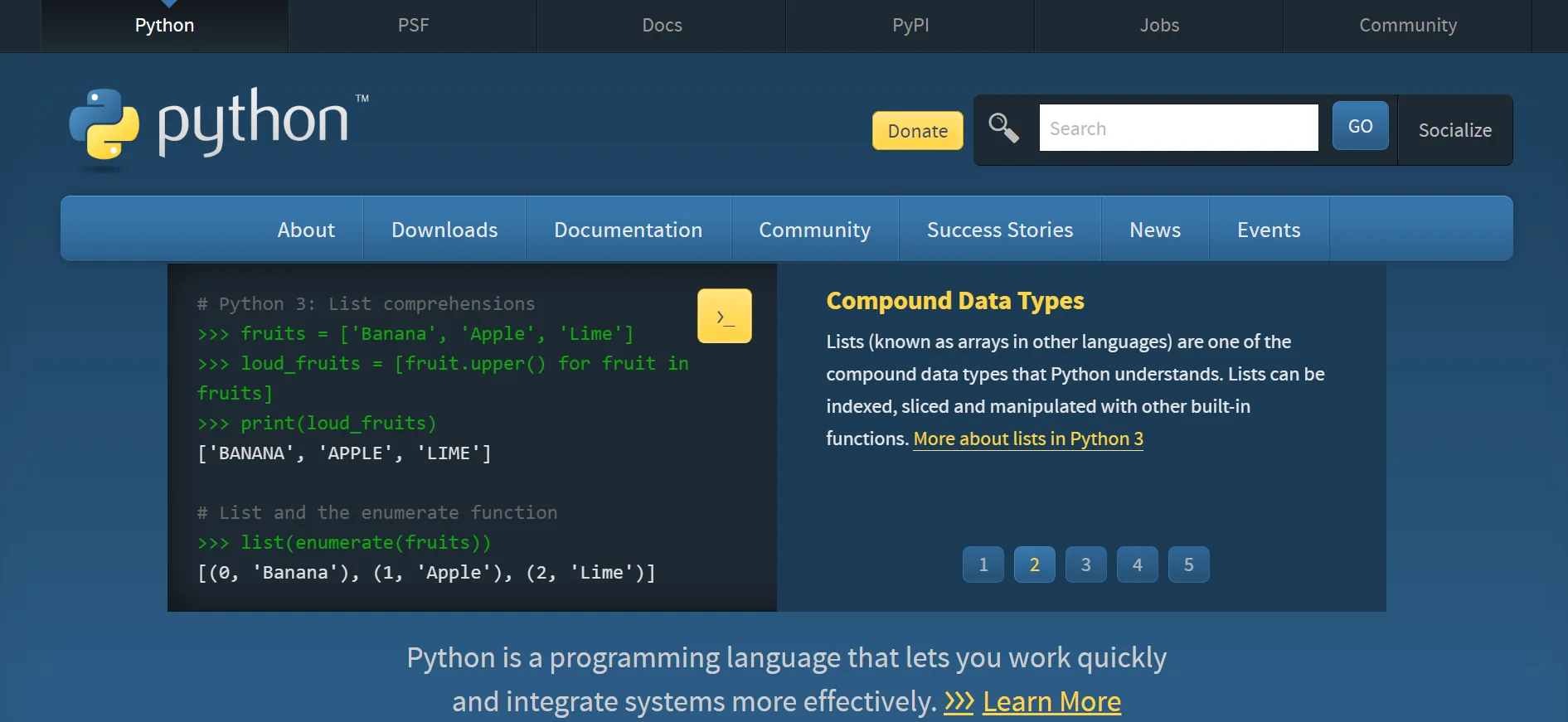
Python is a backend language with readable syntax and rich libraries, widely supported from beginners to professionals.
Main features of Python
- Readable and easy-to-learn syntax
- Rich libraries and frameworks (Django, Flask, FastAPI)
- Excellent integration with AI and machine learning
- Cross-platform compatibility
Python is particularly suitable for web application development, data analysis/big data processing, AI/machine learning system development, and scripting/automation.
In Japan, demand for Python engineers is increasing not only for web application development but also for AI and machine learning related work.
Major companies such as LINE, Mercari, and Recruit have adopted Python.
Learning difficulty: Low to moderate, with syntax and clear structure that’s easy for beginners to understand, enabling rapid development. Many learning resources are available in both Japanese and English, making it a language that can be learned independently.
JavaScript (Node.js): Consistent Development Leveraging Frontend Knowledge
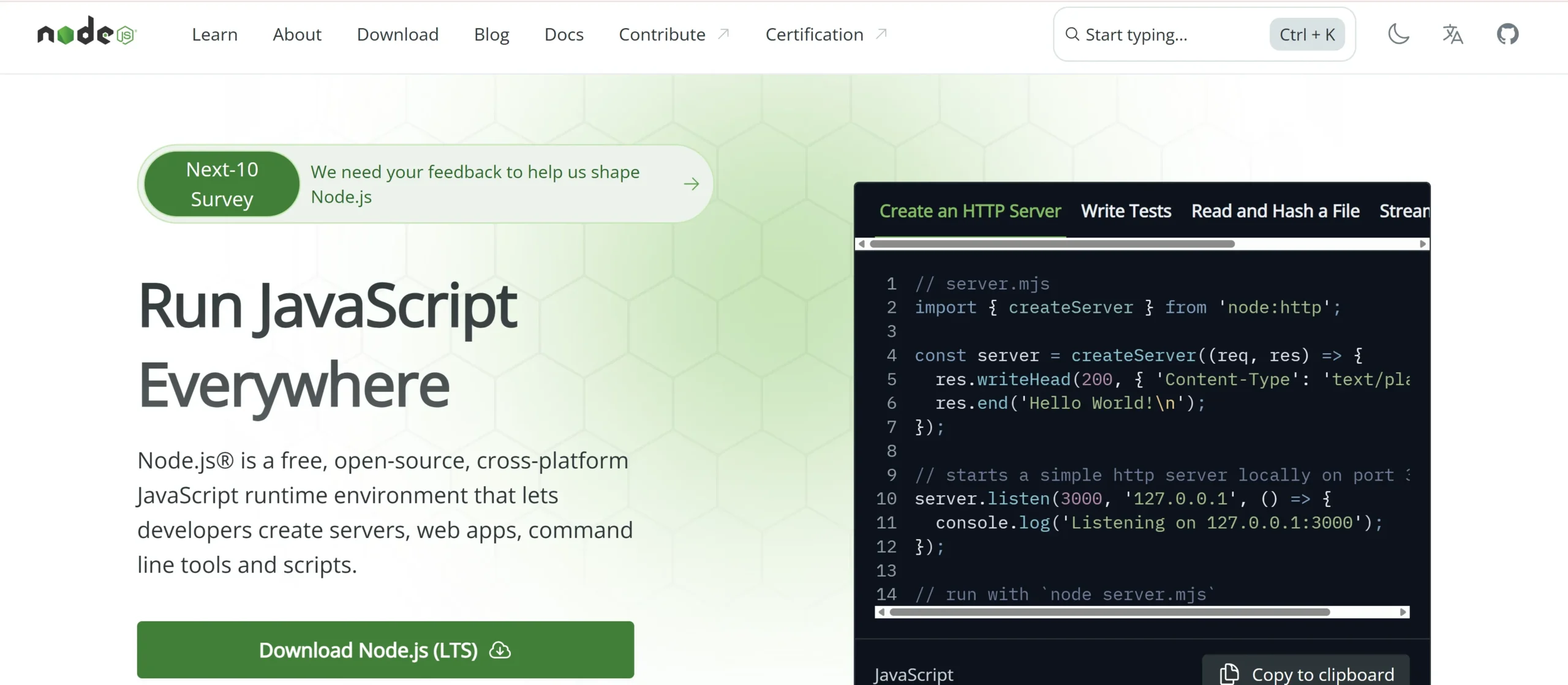
JavaScript has been widely used in frontend development, but with the emergence of Node.js, it has also become mainstream in backend development. The major appeal is being able to use the same language for both frontend and backend.
Main features of JavaScript (Node.js)
- Same language can be used for frontend and backend
- High performance with non-blocking I/O
- Rich libraries through npm
- Mature frameworks such as Express and Nest
Node.js is suitable for real-time applications (chat, games), backend for single-page applications (SPAs), microservices, and API servers.
In Japan, adoption of Node.js is increasing especially in startup companies and web-based companies. There is also growing demand for “full-stack JavaScript” development that can cross the boundary between frontend and backend.
Learning difficulty: Moderate, with relatively easy transition to Node.js if you understand the basics of JavaScript. However, understanding concepts of asynchronous processing and event-driven programming is necessary. It’s an optimal choice for stepping up to backend development for those with frontend development experience.
Java: Enterprise-Oriented Language with Stable Demand and High Reliability
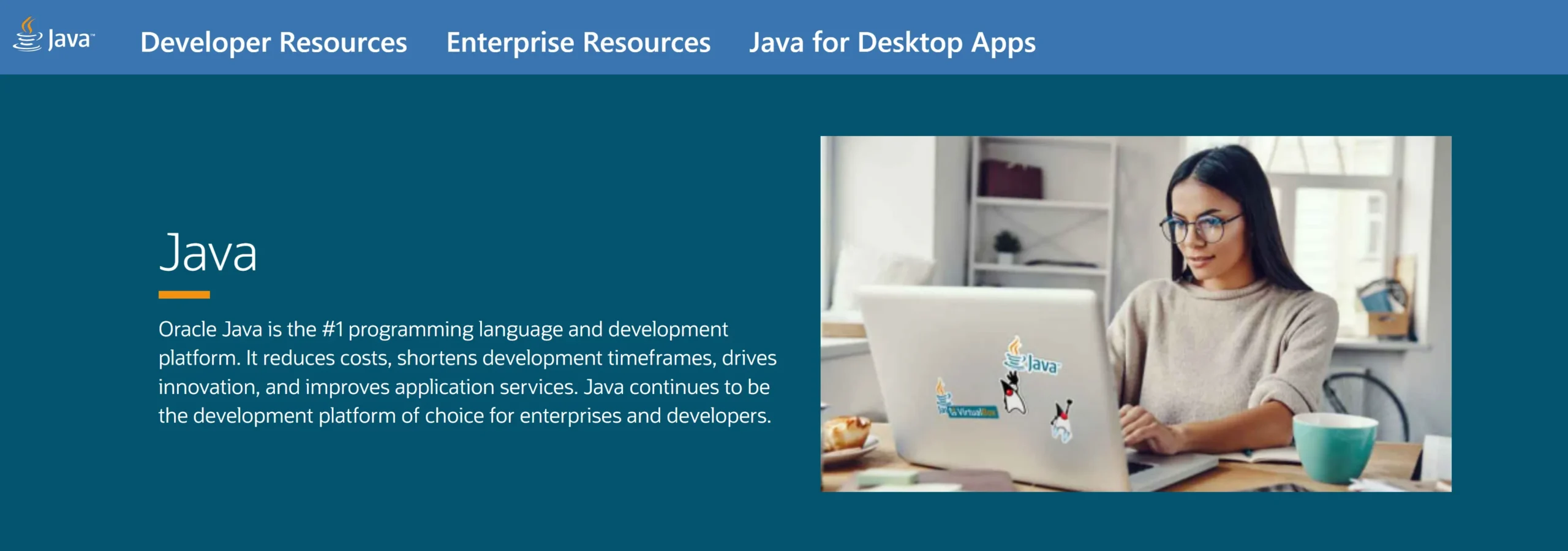
Java has been widely used in enterprise system development for over 20 years, making it a backend language with proven stability and scalability.
Main features of Java
- Platform independence (execution via JVM)
- Safety through a strong type system
- Design for large-scale development
- Robust frameworks such as Spring Boot and Hibernate
Java is suitable for enterprise applications, large-scale web services, financial/payment systems, and Android app backends.
In Japanese corporate systems, especially core systems of financial institutions and large corporations, Java remains mainstream. Many large companies such as Rakuten, NTT, and Mitsubishi UFJ have adopted Java, and the number of job openings remains consistently high.
Learning difficulty: Moderate, requiring understanding of object-oriented programming which may be a bit challenging for beginners. There are abundant systematic learning resources, and once mastered, it can be applied in various fields. Japanese learning materials are also plentiful.
Go: Next-Generation Language with Strengths in High-Speed and Concurrent Processing

Go was developed by Google in 2009 and is a relatively new language, but its simplicity and high performance have been evaluated positively, leading to rapid adoption.
Main features of Go
- Simple syntax
- Fast compilation speed
- Powerful concurrent processing features (Goroutines)
- Memory efficiency
- Rich standard library
Go is suitable for microservices, high-load web services, network programming, and cloud-native applications.
In Japan, adoption of Go is increasing centered around progressive companies such as Mercari, LINE, and Preferred Networks. There is particularly growing demand in services requiring high performance and projects adopting microservice architecture.
Learning difficulty: Low to moderate, with simple syntax and clear coding conventions designed for easy transition from other languages. Relatively easy to master if you have experience with C language or Java. However, Japanese learning resources are still fewer compared to English.
PHP: Proven Standard Language for Website Development
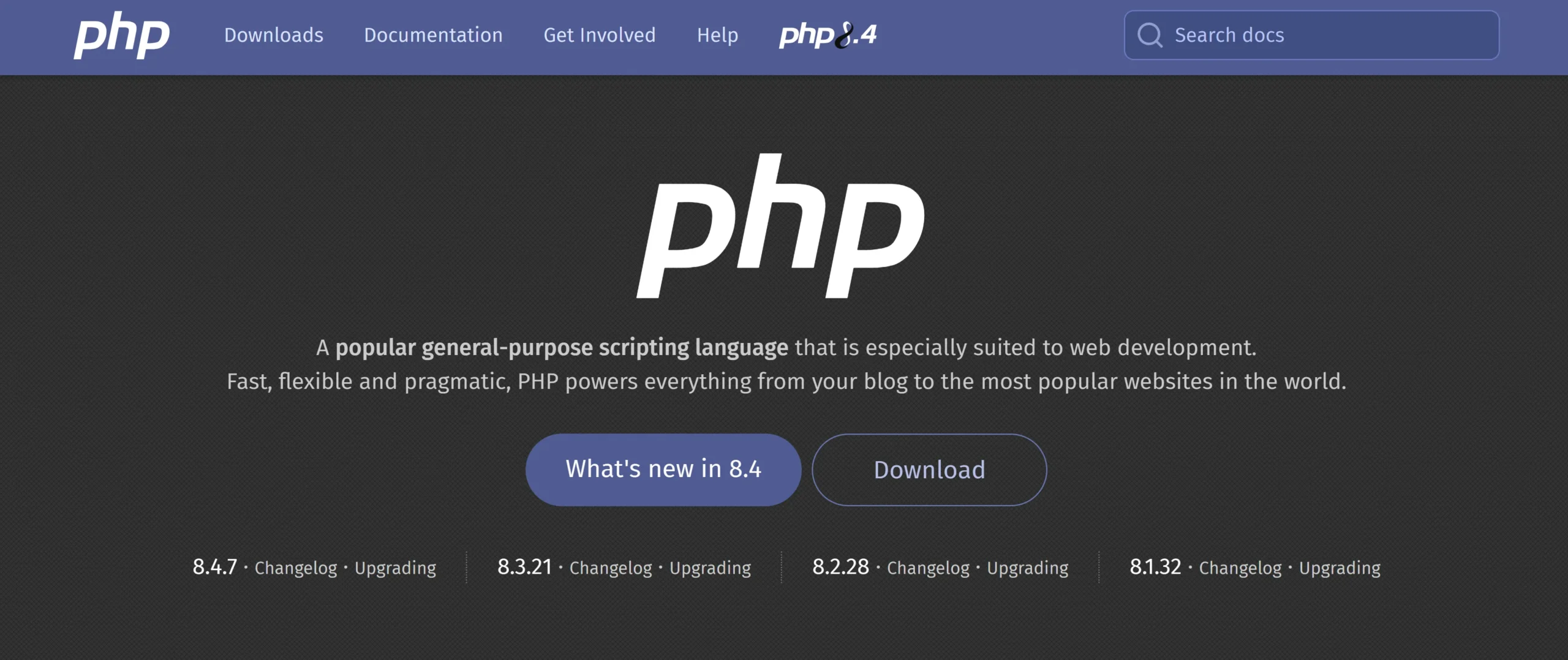
PHP is a language designed for website development and is widely used especially in conjunction with CMSs like WordPress.
Main features of PHP
- Easy integration with HTML
- Extensive database support
- Low learning curve
- Modern frameworks such as Laravel, Symfony, and CakePHP
PHP is suitable for content management systems (WordPress, Drupal), small to medium-sized websites, maintenance and extension of legacy systems, and rapid prototyping.
In Japan, PHP is still widely used in small and medium-sized business websites and e-commerce sites, with consistent demand in the job market. The demand for website development using WordPress in particular remains stable.
Learning difficulty: Low, a language easy for web programming beginners to learn, allowing immediate creation of practical websites. Japanese learning resources are also abundant, making it sufficiently acquirable through self-study.
Ruby: If You Prioritize Development Speed with High Productivity and Readability
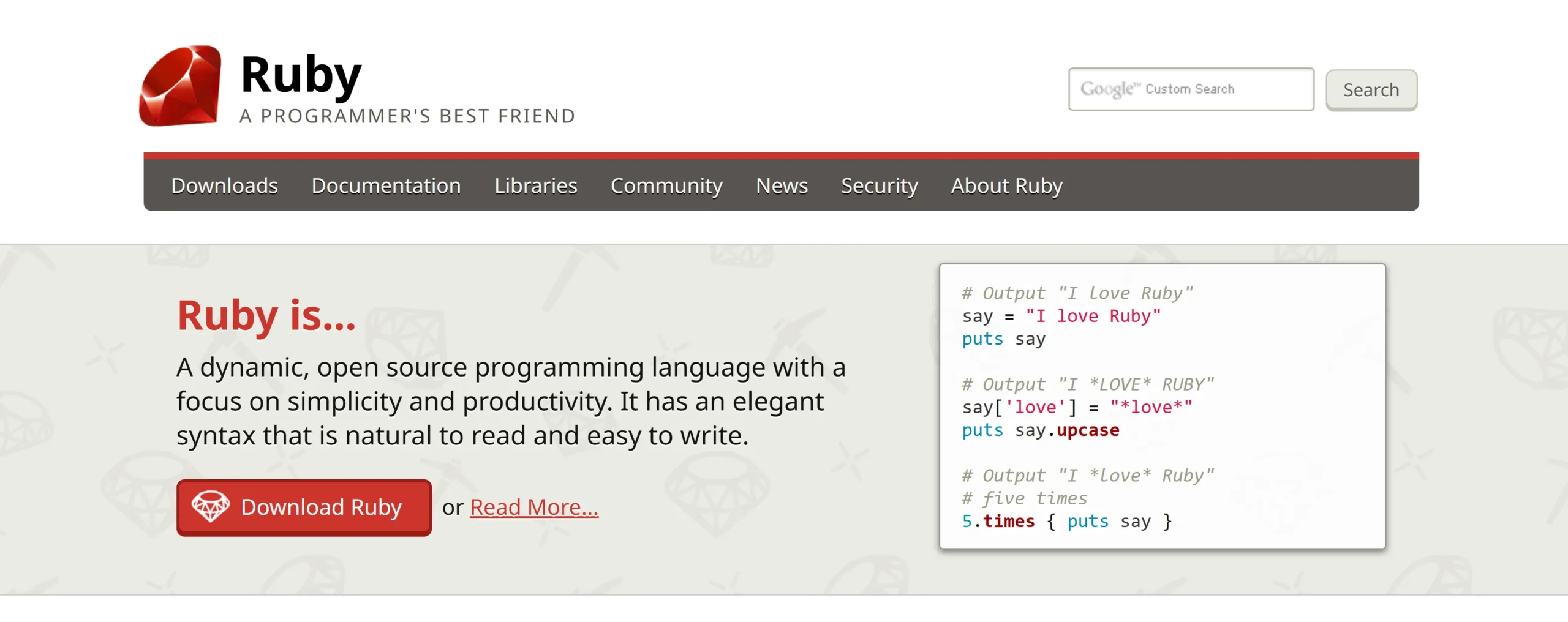
Ruby is a language developed by Japanese creator Yukihiro Matsumoto and is popular especially for web development with the Ruby on Rails framework.
Main features of Ruby
- Readable and beautiful syntax
- Design focused on developer productivity
- “Convention over configuration” philosophy of Ruby on Rails
- Rich libraries (gems)
Ruby is suitable for rapid service development in startups, MVP construction, content-focused web applications, and platform extensions such as Shopify.
As a language originating from Japan, Ruby is highly popular domestically and has been adopted by many Japanese companies such as Cookpad, Money Forward, and Freee.
Learning difficulty: Low to moderate, with syntax designed to be human-readable, making it a beginner-friendly programming language. Particularly with Ruby on Rails, you can develop practical web applications in a short period. Japanese learning resources are also abundant.
C#: Optimal for System Development with High Compatibility with Microsoft Environment
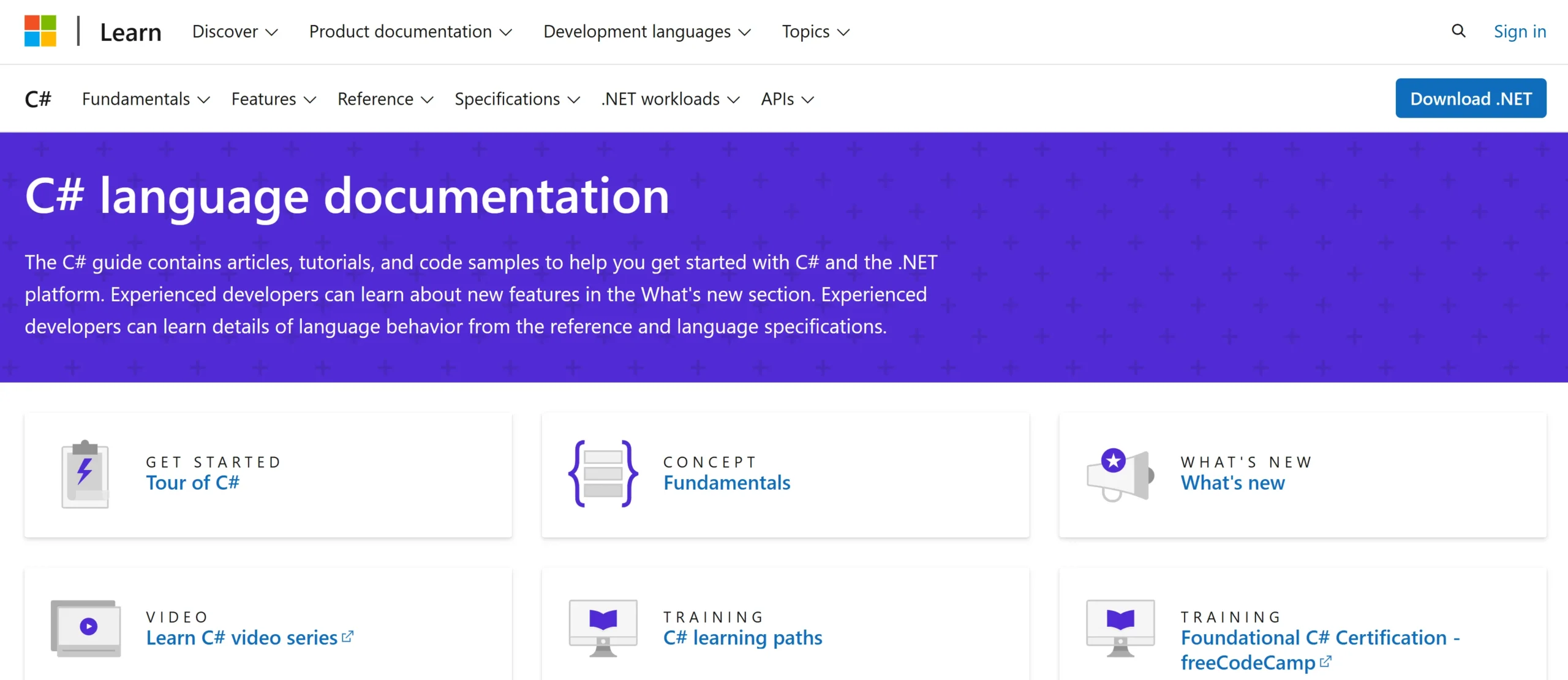
C# is a language developed by Microsoft and is widely used in development with .NET environments and game development using Unity.
Main features of C#
- Strong type system and modern language features
- Integration with IDEs such as Visual Studio
- High-performance web application development with ASP.NET Core
- Easy integration with Windows services
C# is suitable for enterprise Windows environment applications, game development using Unity, web applications (ASP.NET Core), and systems requiring integration with the Microsoft ecosystem.
In Japan, C# is widely used in the development of corporate core systems and internal systems. C# skills are also increasingly in demand in domestic game development companies due to the spread of Unity.
Learning difficulty: Moderate, with relatively easy transition from Java or C++, but understanding the .NET environment is also necessary, which may be somewhat challenging for complete beginners. Microsoft’s official documentation and learning resources are abundant, with many translated into Japanese.
Kotlin: A More Modern Language Than Java That Can Also Be Used for Android Development
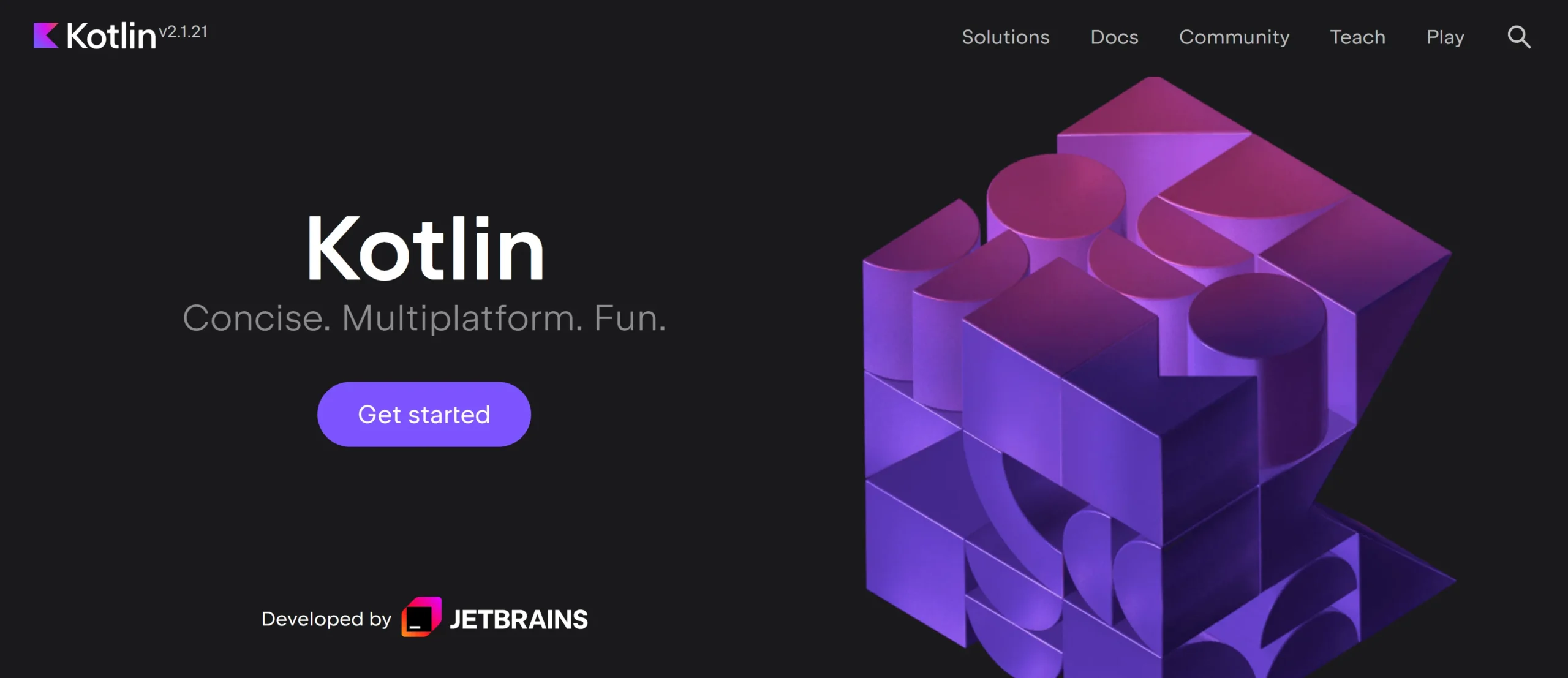
Kotlin is a modern language that has complete compatibility with Java while allowing for more concise and safer code.
Main features of Kotlin
- 100% compatibility with Java
- Safe design reducing NullPointer exceptions
- Concise syntax and expressiveness
- Official development language for Android
Kotlin is suitable for Android application development, modernization of Java-based backend systems, microservice development, and web applications using Spring Boot.
In Japan, demand for Kotlin is growing in the field of Android app development. Projects to extend and refactor existing systems built with Java using Kotlin are also increasing.
Learning difficulty: Low to moderate, quickly masterable if you have experience with Java. Syntax becomes more concise with reduced boilerplate code, allowing many developers to smoothly transition from Java to Kotlin. However, Japanese learning resources are still developing.
Scala: Strengths in Large-Scale Data Processing with Functional Programming
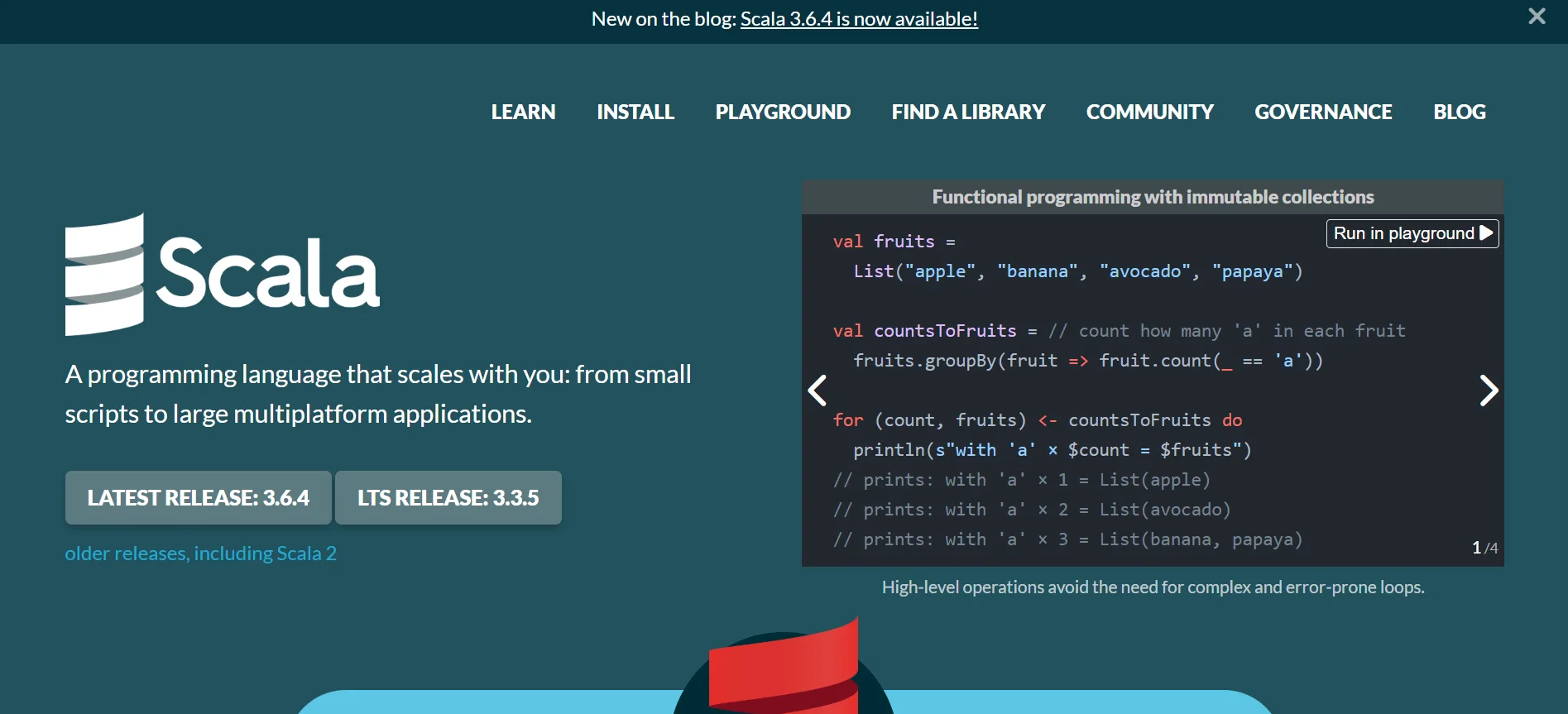
Scala runs on the Java Virtual Machine and is a language that has features of both object-oriented and functional programming.
Main features of Scala
- High compatibility with Java
- Powerful type system and expressive syntax
- Support for functional programming
- Concurrent processing framework using Akka
Scala is suitable for large-scale data processing (Spark), complex business logic implementation, high-load resistant reactive systems, and financial/trading systems.
In Japan, there is demand for Scala in the fields of big data processing using Apache Spark and reactive web application development.
Learning difficulty: Moderate to high, with advanced language features including functional programming concepts, which can be difficult for beginners. May take time to master even for Java experienced developers, but once acquired, it becomes a skill with high market value.
Rust: A Promising Future Language That Balances Memory Safety and High-Speed Processing
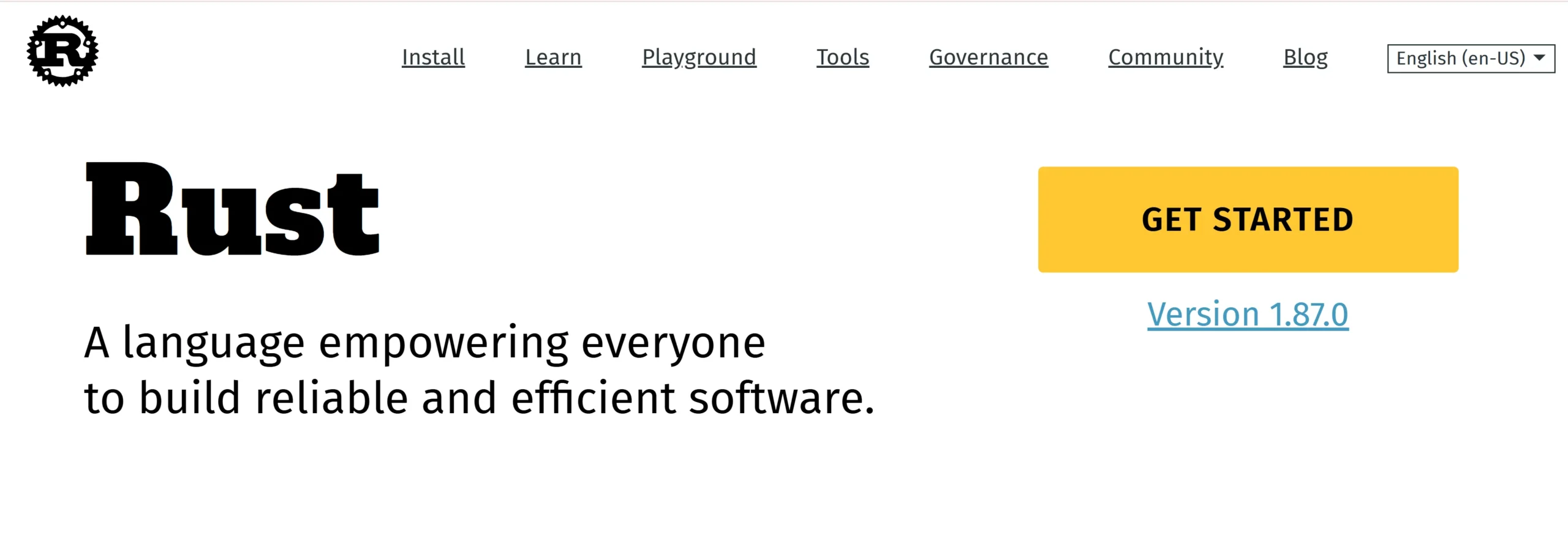
Rust is a relatively new language designed to achieve both memory safety and performance.
Main features of Rust
- Memory safety verification at compile time
- Performance comparable to C/C++
- Zero-cost abstractions
- Modern package manager and development tools
Rust is suitable for system programming, WebAssembly development, high-performance backend services, and embedded systems/IoT.
In Japan, adoption of Rust is still limited, but it is gradually gaining attention in areas requiring both performance and security.
Learning difficulty: High, requiring understanding of unique concepts such as ownership systems and lifetimes, with a relatively steep learning curve. However, once mastered, you can write safe and efficient code, and demand is expected to increase in the future. Japanese learning resources are still limited.
■日本でエンジニアとしてキャリアアップしたい方へ
海外エンジニア転職支援サービス『 Bloomtech Career 』にご相談ください。「英語OK」「ビザサポートあり」「高年収企業」など、外国人エンジニア向けの求人を多数掲載。専任のキャリアアドバイザーが、あなたのスキル・希望に合った最適な日本企業をご紹介します。
▼簡単・無料!30秒で登録完了!まずはお気軽にご連絡ください!
Bloomtech Careerに無料相談してみる
5. Recommended Backend Languages by Nationality and Background

The language selection for succeeding as a backend engineer varies depending on your nationality, background, and career goals.
Here are recommended languages for various situations.
Recommended Languages for Foreign Engineers Working in Japan: Java, PHP, Ruby
- Java
For foreign engineers already working in Japan, Java is widely adopted in large enterprises and financial institutions with stable demand. Even without sufficient Japanese language ability, high technical skills in Java tend to be evaluated positively. Additionally, technical documentation is abundant in English, making it easier to continue learning across language barriers. - PHP
PHP is widely used in small and medium-sized enterprises and web production companies in Japan, making it a relatively accessible field. With specific skills such as WordPress customization, you can expand your activities as a freelancer or side business. - Ruby
Ruby is adopted by many companies in Japan as a language originating from Japan, with high demand especially in startup companies. The Ruby community in Japan is active, with an increasing number of English-friendly events that foreign engineers can easily participate in.
Languages Foreign Engineers Should Prioritize When Seeking Employment in Japan: Python, Java, C#
- Python
For foreign engineers aiming to work in Japan, Python is highly popular globally and has rapidly increasing demand in Japan. In the fields of AI and machine learning, there are many companies where you can work in English environments, with relatively low language barriers. Also, since the syntax is simple, communication through code is easier even if you’re unsure about Japanese communication. - Java
Java is widely used in Japanese enterprise systems with high stability in demand. Many projects use global standard technology stacks, creating environments where foreign engineers can easily participate. - C#
C# has demand especially in the Japanese game industry (using Unity) and enterprise system development. In Japan, where many companies use Microsoft products, C# skills tend to be easily evaluated.
For Those Aiming to Become Backend Engineers from Scratch: Python, JavaScript
- Python
For those with no programming experience aiming to become backend engineers, Python is especially recommended. Python has readable and intuitive syntax that is friendly to beginners and can be used for a wide range of purposes, allowing flexible changes in future career direction. Learning resources are abundant, with many free materials available. With frameworks like Django, you can acquire web app development skills in a relatively short period. - JavaScript (Node.js)
JavaScript (Node.js) is also recommended, with the efficiency of learning the same language for both frontend and backend. It has the convenience of setting up a development environment with just a web browser, allowing immediate start of practical projects. Visual results are easily obtained, which helps maintain motivation.
6. Salary Trends and Job Market by Language

Understanding the salary and market trends for each language is important in making career choices as a backend engineer.
Here, we analyze the salary trends and job situations by language in the Japanese market.
Comparison of Salary Trends by Language in Japan
There are differences in salaries by language in the Japanese backend engineer market.
Salaries vary greatly depending on company size, region, individual skill level, and project experience. Engineers with multiple languages or full-stack skills tend to earn higher salaries.
Java engineers
Many are hired by large Japanese companies and financial institutions, with expectations for stable high salaries.
Python engineers
Salaries are on an upward trend due to rapidly increasing demand, especially in the fields of AI and machine learning.
Ruby engineers
Skills in Ruby on Rails development are particularly valued in startup companies.
PHP engineers
Salaries tend to be slightly lower compared to others as there are many talents in the market, but those with experience in modern frameworks such as Laravel tend to see higher salaries.
Go engineers
High performance and scalability are valued, with high salaries expected especially for development experience in cloud-native environments.
Salary Negotiation Points for Foreign Engineers
To successfully negotiate salaries with Japanese companies as a foreign engineer, highlighting technical skills is important.
Effective approaches include sharing code on GitHub or contributing to OSS, writing technical blogs (even better if in Japanese), enhancing portfolio sites, and obtaining international qualifications or certifications.
As differentiating factors in the Japanese market, it’s beneficial to emphasize Japanese communication skills (JLPT N3 or above as a guideline), understanding of Japanese company development culture, value as a bridge between your home country and Japan, and knowledge of overseas markets or ability to support global expansion.
During negotiations, it’s important to research appropriate salary ranges in advance. Present your self-promotion with concrete achievements, and consider comprehensive conditions including benefits and working conditions. Using recruitment agencies can also be effective in some cases.
Foreign engineers can often leverage language skills and international experience to increase their salaries, especially in globally-oriented companies or foreign-affiliated companies.
◆Related Articles
The following article explains the JLPT (Japanese Language Proficiency Test). Please use it as a reference.
Adoption Language Trends by Company Size
As a recent trend, even large companies are adopting cloud-native development and microservice architectures, increasing the demand for Go language and container technologies.
Additionally, DX is progressing in companies of all sizes, increasing the value of skills in legacy system modernization.
Characteristic trends by company size
- Large enterprises and financial institutions
Mainly use Java, C#, and COBOL (legacy systems), with a tendency to prioritize stability, security, and large-scale system design. The development style is often waterfall, though transitions to agile are progressing. Long-term career development is possible with robust in-house training systems. - Medium-sized enterprises and SIers
Mainly use Java, PHP, .NET, and Python, valuing adaptability to a wide range of technology stacks and communication skills. Development styles vary depending on the client. It’s characterized by the ability to gain diverse project experience and broaden technical skills. - Startups and web-based companies
Ruby, Python, Node.js, and Go are mainstream, valuing development speed, adaptability to new technologies, and problem-solving abilities. Development styles are based on agile and DevOps culture. It’s characterized by many opportunities to work with the latest technologies and having significant discretion. - Foreign-affiliated IT companies
Go, Python, JavaScript/TypeScript, and Scala are often adopted, emphasizing advanced technical skills and English communication abilities. Development styles are based on agile, CI/CD, and microservices, with globally standardized development environments, though competition is high.
Salary Trends Based on Years of Experience and Language Skills
The salary of backend engineers varies greatly depending on the combination of years of experience and skill level in specific languages.
Deep specialized knowledge and experience in specific languages are important factors for salary increases at any stage.
For example, having Python skills in data science or being familiar with microservice architecture in Java can result in salary differences of more than 20% for the same years of experience.
- With 1-3 years of experience (junior level), you’re at the stage of understanding basic language functions and frameworks. At this stage, understanding of basic algorithms and data structures, and code quality are differentiating points.
- With 3-5 years of experience (mid-level), you’re at the stage where you can develop independently. Performance optimization, security measures, and code review abilities become differentiating points, and developing skills in architecture design and project management becomes a growth strategy.
- With 5-10 years of experience (senior level), you’re at the stage where you can make technology selections and design decisions. Complex problem-solving abilities, team leadership, and understanding of business requirements become differentiating points, and forming “T-shaped skills” with proficiency in multiple languages/technologies and acquiring management skills become the next steps.
- With 10+ years of experience (expert/architect level), you’re at the stage where you can formulate technical strategies. Enterprise architecture design abilities and technical team leadership become important, and exploring the latest technology trends and integrating business strategy with technology are required.
■Related Reading
The following article provides a detailed explanation of software engineer salaries in Japan, including average annual income and market trends.
7. Japanese Development Culture and Strengths of Foreign Engineers

The development culture in Japanese IT companies has unique characteristics that differ from global standards.
For foreign engineers to build a career in the Japanese market, it’s important to understand these characteristics and know how to leverage their strengths.
Characteristics of Japanese Company Development Processes and Team Structures
Japanese company development processes and team structures have several characteristics.
Document-oriented culture
There is a document-oriented culture where detailed design documents and specifications are typically created before writing code. Especially in large enterprises and SIers, waterfall-type development that proceeds through stages from requirements definition to basic design and detailed design remains mainstream, and there are even situations where document quality is valued over code.
Consensus-oriented decision making
Consensus-oriented decision making is characteristic, with a tendency to value team agreement in technical selection and design policy decisions. Bottom-up decision processes that seek the consent of all parties are preferred over top-down decisions. While this may take time for decisions, once decided, everyone cooperates to implement.
Team structure
Team structures have clearly defined roles such as PL (Project Leader) and PM (Project Manager), with organizational structures that are often based on seniority, premised on new graduate recruitment and long-term employment. Also characteristic are skill acquisition through team rotation and communication that emphasizes “hourensou” (reporting, contacting, consulting).
Quality commitment
Quality commitment is also a characteristic of Japanese companies, generally placing importance on low bugs and stability, with much time and resources allocated to the testing phase. On the other hand, there is a tendency to be cautious about introducing technology trends, especially in large companies, often choosing proven stable technologies.
How Foreign Engineers Can Overcome Language Barriers with Technical Skills
Foreign engineers lacking confidence in Japanese ability can overcome language barriers by leveraging their technical skills through several approaches.
- Writing clean, readable, and properly commented code can embed part of the communication in the code itself.
- Utilizing visual tools such as diagrams, charts, and prototypes enables communication that doesn’t rely on words.
- Visualizing quantitative contributions such as commit history, bug fixes, and feature implementations on GitHub can lead to evaluation beyond language. Hosting study sessions or lightning talks about your specialty or the latest technology is also a good opportunity to demonstrate technical value.
- Being able to make unique proposals leveraging international project experience, characteristics of your home country’s market, or cultural background can be valued as a unique presence. Prioritizing learning IT-related Japanese terminology makes it easier to participate in technical conversations.
By combining these methods, it’s possible to be evaluated and contribute based on technical skills even if Japanese language ability is developing.
Continuing Japanese study while gradually improving communication skills is the key to long-term success.
8. Roadmap for Mastering Backend Languages

Efficient acquisition of backend languages is an important step in career development as an engineer.
Here, we propose a roadmap for mastering backend languages from scratch.
Efficient Learning Methods to Acquire Basics in 3 Months from Scratch
For programming beginners to acquire the basics of backend languages in a short period, a planned approach is necessary.
For efficient learning, it’s important to balance input and output, utilize official documentation, write code with other learners if possible, learn from errors, and accumulate small success experiences.
- First 1-2 weeks
Learn basic programming concepts (variables, data types, conditional branches, loops), basics of algorithms and data structures, and concepts of object-oriented programming. - Next 3-4 weeks
Master the basic syntax of your chosen language, get used to using an integrated development environment, and implement simple tasks. - Weeks 5-6
Learn web basics and backend concepts, basics of HTTP/HTTPS and RESTful APIs, database fundamentals, and HTML/CSS basics. - Weeks 7-8
Study major frameworks of your chosen language, understand design patterns such as MVC architecture, and create a simple CRUD application. - Final weeks 11-12
Develop a small web application integrating the knowledge you’ve learned, learn how to manage source code with GitHub, and try publishing your application.
Recommended Learning Resources and Materials Available in Both Japanese and English
Utilizing high-quality resources available in both Japanese and English is effective for backend language learning.
For online learning platforms, Udemy has many courses with Japanese subtitles, allowing practical project-based learning.
Progate is easy to understand for beginners, a platform where you can learn while coding in the browser, with many language courses available in both Japanese and English.
Coursera and edX provide high-quality courses from world-class universities and tech companies, with some courses having Japanese subtitles.
For community and Q&A sites, Stack Overflow is English-based but usable by non-English speakers with search skills.
Qiita and Zenn have abundant technical articles by Japanese engineers, helpful for detailed know-how and troubleshooting in Japanese.
Tips for programming learning in both Japanese and English:
Remember technical terms in English, develop the habit of writing code in English, use native language resources for initial understanding of complex concepts, develop the habit of referring to official documentation, and engage in practical projects early.
Efficient learning across language barriers is possible by combining these resources.
9. Benefits of Learning Multiple Languages and Career Strategy

In modern backend development, mastering multiple programming languages is an important strategy for broadening career options and increasing market value.
Let’s consider approaches and career strategies for mastering multiple languages.
Compatible Language Combination Patterns
To efficiently master multiple languages, it’s important to choose compatible language combinations.
JavaScript (Node.js) + Python combination covers a wide range from frontend to backend and data analysis, suitable for web applications in general, API servers, and data processing. The advantage is covering three important areas: frontend, backend, and data science.
Java + Kotlin combination operates on the same JVM with 100% compatibility, suitable for enterprise applications and Android app development. The advantage is being able to gradually refactor existing Java projects to Kotlin.
PHP + JavaScript is a combination where PHP handles the backend and JavaScript the frontend in many websites, suitable for CMS-based website development, enabling maintenance of legacy websites and modern UI/UX.
Python + Go combination has Python’s versatility and Go’s high performance complementing each other, allowing for prototype development in Python and implementing performance-critical parts in Go. The advantage is optimizing both development speed and execution speed.
Ruby + JavaScript combines Ruby on Rails with modern frontend frameworks for full-stack web application development, enabling both rapid backend development and rich UI experiences.
C# + JavaScript/TypeScript combines .NET environment and modern SPA development, enabling robust application development fully utilizing the Microsoft ecosystem.
Language Acquisition Order
Starting with languages that have simple grammar and provide easy feedback, then progressing to more complex languages is effective.
Also, mastering one language to a certain extent before moving to the next allows for firmly grasping basic programming concepts.
Methods to Step Up to Become a Multi-Language Engineer
To build a career as a “multi-language engineer” mastering multiple languages, a stepped approach is effective.
Practical methods for multi-language acquisition include reading code from open source projects, solving the same problem in different languages, completing small projects in newly learned languages, participating in user groups and conferences for each language, and teaching others what you’ve learned.
Being able to handle multiple languages broadens your perspective to oversee entire projects and enables optimal technology selection.
However, deeply understanding a few languages often has more value than knowing many languages superficially.
Two Career Development Directions: Specialized and Multi-Language
There are two different approaches to career development for backend engineers: “specialized type” and “multi-language type”
Both approaches have value, and there is no “correct” answer. It’s important to choose based on your personality, interests, and career goals.
- Specialized engineer (specialist)
Deeply explores specific languages or technology stacks, with deep knowledge of that language’s ecosystem and frameworks. Has high market value as an expert in a specific field, can solve technically challenging problems, and can create technical innovations from deep knowledge of the language. - Career path
From language specialist to technical architect, and further to technical fellow. - Multi-language engineer (generalist)
Can handle multiple languages and technology stacks, make optimal technology selections depending on the situation, and excel in integrating between different technologies.
Has flexibility to handle a wide range of projects, can achieve overall optimization in technology selection and architecture design, serve as a bridge between teams and systems, and is resilient to changes in technology trends.
10. Career Paths as a Backend Engineer in Japan

We introduce career paths and success stories for building a career as a backend engineer in Japan. In particular, we explain the path to success in Japanese companies from the perspective of foreign engineers.
Success Stories of Foreign Engineers’ Job Changes
Let’s look at specific success stories of foreign backend engineers working in Japanese companies.
Example of an engineer from Vietnam: After working as a PHP engineer at a Vietnamese IT company for 3 years, came to Japan seeking technical growth. After studying for 1 year at a Japanese language school and obtaining JLPT N3, joined a Japanese web production company. Self-studied Ruby on Rails, participated in company Rails projects, and raised evaluation through improving Japanese ability (acquiring N2) and writing technical blogs. After 2 years, changed jobs to a Ruby-specialized startup company as a backend engineer, and currently leads a team of five as a tech lead.
Example of a Java engineer from India: After 6 years of experience at an Indian IT giant, came to Japan as a Java engineer through a Japanese company’s overseas recruitment program. Built trust through projects at the Japanese headquarters and acquired specialized knowledge in cloud technology. After 4 years, changed jobs to a foreign-affiliated cloud service company as a Java architect, and currently serves as a bridge role for a bilingual team of Japanese and Indian members.
Example of a Python engineer from China: Majored in computer science at a Chinese university with study abroad experience in Japan. Developed interest in Python and AI/machine learning during university, participated in a Japanese AI startup as an intern, and then joined as a data engineer through new graduate recruitment. In charge of Python backend development in the company’s AI projects, actively contributing to open source projects and presenting at tech events. Currently working as a senior engineer in the AI division of a major Japanese IT company.
Path to Becoming a Bilingual Engineer: Balancing Technical Skills and Language Ability
For success as a backend engineer in Japan, improving both technical skills and Japanese language ability provides a significant advantage.
Approaches to improving Japanese language ability
- Prioritize learning IT/technical related Japanese
- Create technical blog posts in Japanese
- Participate in Japanese engineer communities
- Engage in pair programming and code reviews, etc.
Differentiation points as a bilingual engineer include value as a cultural bridge, role as a technology translator, providing global perspectives, and more.
11. Working as a Backend Engineer in Japan by Appropriately Selecting and Acquiring Languages
Choosing a backend language is not just selecting a tool, but the first step in a career strategy. Consider your goals, aptitudes, and market needs when choosing, and acquire languages steadily.
Foreign engineers in particular can expand their opportunities for success in Japanese companies by gradually improving both technical skills and Japanese language ability.
Language selection is just the starting point, but appropriate choices and continuous learning are the shortcuts to success.




